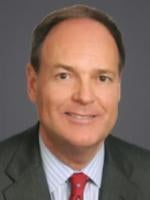The U.S. District Court for the Central District of California, applying de novo review due to California’s discretionary clause ban, ruled that an employee of Apple, Inc. was not entitled to long-term disability benefits because he did not satisfy the burden of proving that he was disabled. McCool v. Life Insurance Company of North America, et al., No. 17-cv-07766 (November 9, 2018).
Background
Gabe McCool, an Apple Genius Bar technician, sued Life Insurance Company of North America (LINA) and Apple after LINA denied his request for long-term disability benefits. Under Apple’s long-term disability policy, for the first 12 months “an employee is considered ‘disabled’ if, because of an injury, he is ‘unable to perform all the material duties of his or her Regular Occupation or a Qualified Alternative.’” After an employee has received benefits for 12 months, the employee will continue to be considered disabled only if he or she is “unable to perform all the material duties for any occupation for which he or she is, or may reasonably become, qualified based on education, training, or experience.”
LINA initially paid McCool disability benefits because the insurance company determined, based on a peer review of McCool’s medical records, that he could only sit and stand occasionally and was, therefore, precluded from performing his job. Under the policy, the claimant was required to provide satisfactory proof of his disability on an ongoing basis. After one year, LINA terminated his benefits. LINA determined that he no longer met the definition of disabled because he was not precluded from performing the duties of any occupation. In reaching its decision, LINA relied on McCool’s file, including medical records from McCool’s doctor; peer reviews of his medical records; surveillance footage showing him walking, entering and exiting a vehicle, driving, and carrying items without difficulty; and two transferrable skills analyses (TSA), which identified three suitable sedentary jobs for McCool. LINA’s TSAs resulted in a finding that McCool could reasonably perform a sedentary or a light job considering his ability to sit “frequently.”
The Court’s Analysis
The court discussed whether McCool could reasonably perform a sedentary or a light job considering his ability to sit “frequently”—a fact that both parties agreed was supported by the medical evidence. “Frequently” was defined as between 2.5 to 5.5 hours in an 8-hour workday. And although a single treating physician found that he could only sit “occasionally,” or for fewer than 2.5 hours a day, 3 separate medical practitioners later found that this physician’s findings were unsupported by the medical records. Repeated requests for clarification from the treating physician who had supported the restriction were ignored. As a result, LINA relied on the most recent findings of three separate doctors to determine that McCool could handle “frequent” sitting.
The court then reviewed case authority in the Ninth Circuit Court of Appeals, holding that an employee who cannot sit for more than four hours in an eight-hour workday cannot perform sedentary work. According to at least one Ninth Circuit case, light work is more active than sedentary work and requires standing or walking for up to two-thirds of the workday.
The medical evidence presented to LINA from several doctors indicated that McCool could sit between 2.5 and 5.5 hours per day. This range, however, presented a problem for the court. McCool suggested that because his capacity might fall below the four-hour-per-day limit, he could not perform sedentary or light work. Light work, the court found, requires that about 2/3 of an 8-hour day are spent standing, or about 5.3 hours. The evidence, therefore, weighed against the likelihood that McCool could perform light work, since he could stand, at most, 5.5 hours a day. Since the doctors disagreed about whether he fell in the “occasional” or “frequent” category, the court concluded that it was unlikely that he fell on the farthest end of the “frequent” continuum.
However, the court noted that McCool bore the burden of proving by a preponderance of the evidence that he could sit only between 2.5 and 4 hours a day, precluding him from performing sedentary work. After appeal extensions and numerous unanswered requests for clarification from his supporting treating physician or other medical providers, the court concluded that McCool had failed to present sufficient evidence to prove that he could not sit for four hours a day.
Conclusion
The court, in ruling for LINA, determined that McCool could perform two sedentary jobs based on numerous doctors’ evaluations and peer reviews of his treating physician’s evaluations. Ultimately, the court found that McCool had failed to establish by a preponderance of the evidence that he could not perform either of the sedentary jobs identified in his TSAs. He also had not established that the TSAs were based on unreliable or unsupportable medical evidence or presented other medical evidence that LINA failed to consider that would necessitate a change in diagnosis. Because the evidence indicated that there were jobs that McCool could perform within his limitations, the court upheld the decision that he did not qualify for continued long-term disability benefits under LINA’s policy.





 />i
/>i
